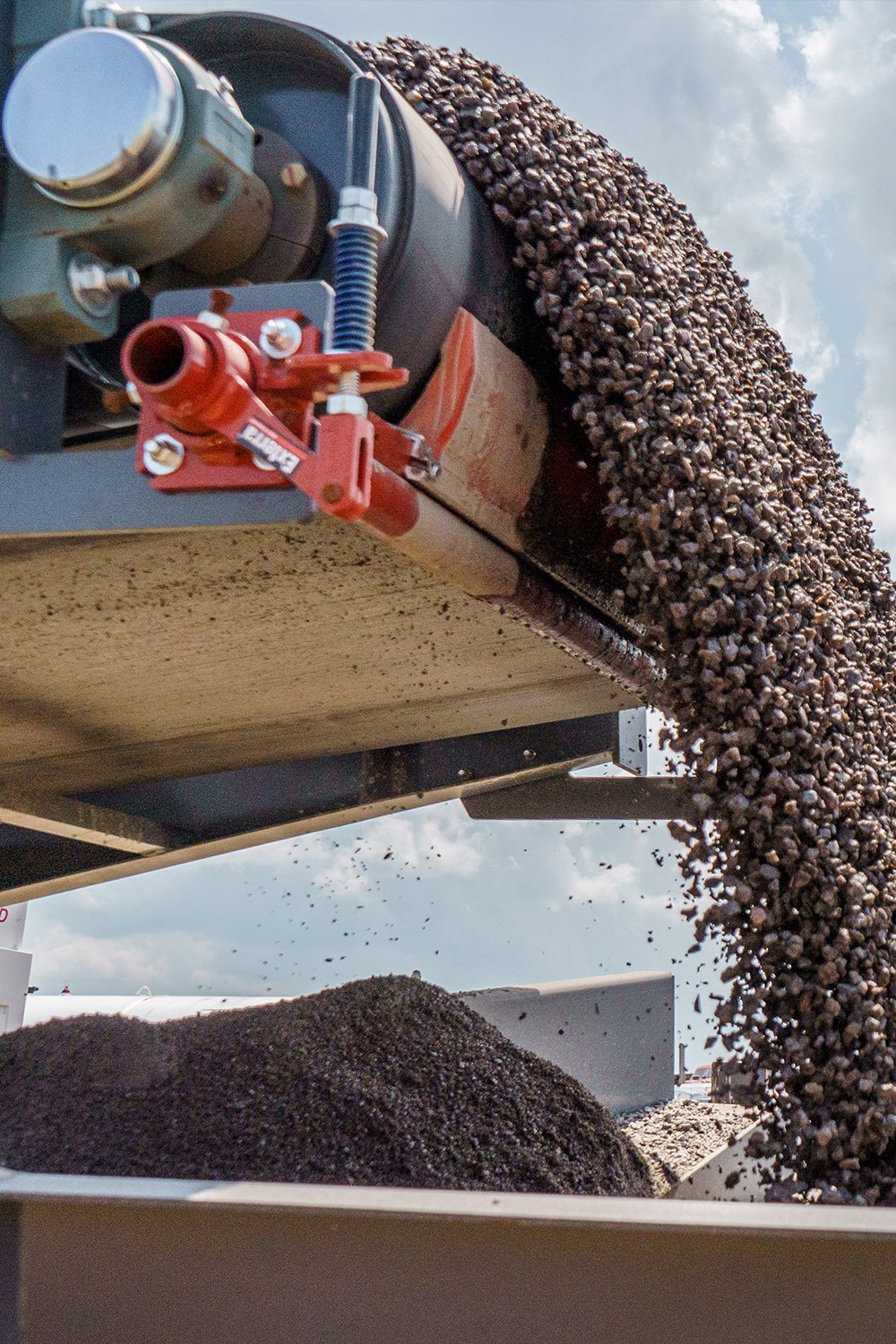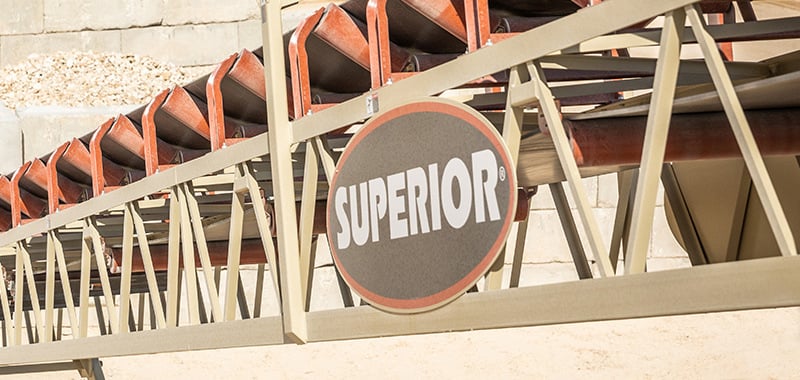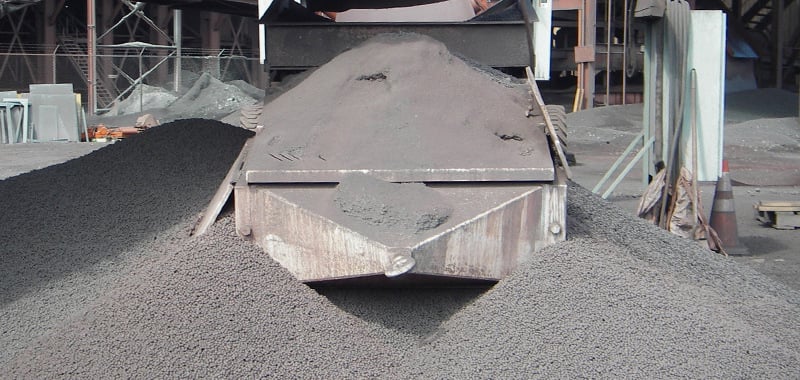Tech Tip: Conveyor Belt Cleaners
Controlling Costly Carryback Material
Carryback is fugitive material that sticks to the conveyor belt after it passes over the head pulley. When left unchecked, carryback causes material buildups on idlers, pulleys and other components – a costly problem that greatly affects efficiency by causing mistracking or belt damage. More importantly, carryback creates unwanted fugitive material piles along the underside of the conveyor. This means costly man-hours in cleanup and added safety risks for workers (MSHA reports that nearly 50% of conveyor accidents occur during carryback cleanup). So, the use of a belt cleaner to control carryback is a must.
Multiple Systems Preferred
A belt cleaner is usually a form of wiper or scraper device mounted near the discharge or head pulley. Belt cleaners can be either single or multiple cleaning systems. Multiple systems include a pre-cleaner (the primary cleaner) and one or more secondary cleaners. The pre-cleaner, mounted on the head pulley just below the discharge trajectory, scrapes material off the belt and allows it to fall in with the discharge materials. Then, the secondary cleaners remove the thin layer of fines that is left on the belt after pre-cleaning. The secondary cleaner mounts under the belt on its return side at the head pulley, so the blade contacts the belt against a firm surface. Secondary cleaners can be used alone in dry, fine applications. However, multiple belt cleaning systems are known to increase cleaning efficiency and are particularly preferred when conveying moist or sticky material.
Three Scraper Efficiency Tips
- Primary and secondary belt cleaners should be installed at the appropriate angles to prevent belt damage. You must maintain proper blade-to-belt contact without digging into the belt. Before installation, examine your belt for wear, damage, and smooth splicing. The condition of the belt will affect its ability to be effectively cleaned.
- High belt speed can affect the operation as belt vibration can bounce the belt cleaner blade on and off the belt. So, the use of several narrow belt cleaner blades rather than a wide one-piece blade is recommended. Also, belt cleaner blades should be mounted against the belt while the belt is against the head pulley, ensuring that the blade cleans against a firm surface.
- As to blades, choose the optimum wear material for your application. For example, polyurethane is a material that offers long wear life while minimizing the risk of any belt damage. Also, worn blades cause decreased blade to belt contact pressure.

Related Content

Conveyor Maintenance: Basic Design to Increase Your Uptime
Designing a conveyor to be maintenance friendly means providing adequate provisions for necessary service from the onset.

Conveyor Load Zones: Prevent Spillage with Simple Maintenance
Material spillage is a costly proposition and is common to many operations due to a lack of good preventive maintenance.

Conveyor Transfer Points: Useful Tips to Eliminate Spillage
Preventing spillage at transfer points is imperative, since cost reductions from elimination at one transfer are significant.
Talk to an Expert
Need more information? We'll get you in contact with a product expert in your area.
